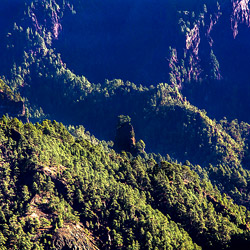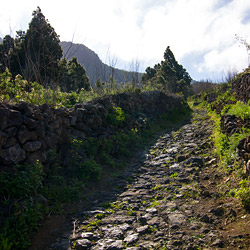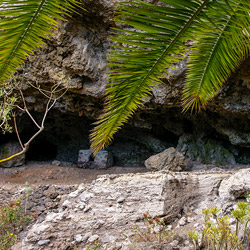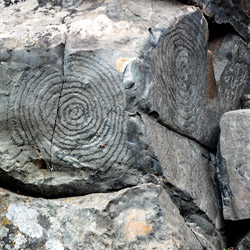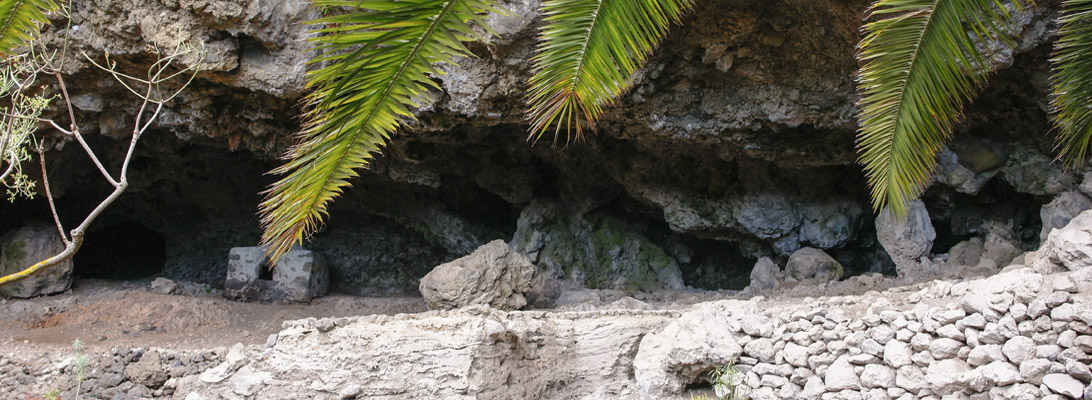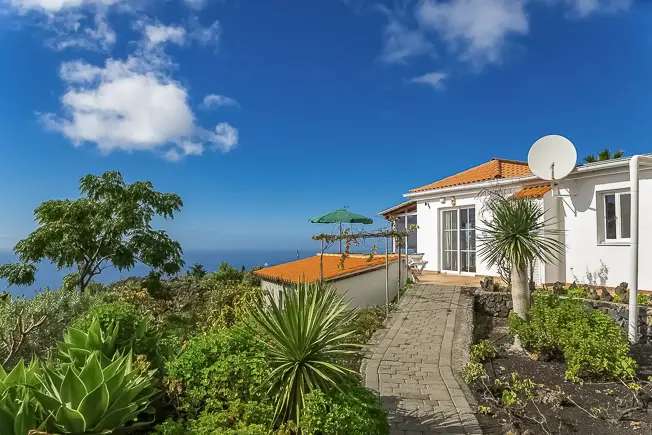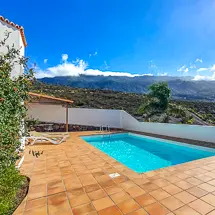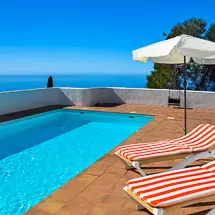It is assumed that the Guanches (pre-Spanish population) of La Palma have immigrated from North Africa in several waves since about 500 BC. Remains of the language, traditions, eating habits and the traditional description of the ancient Canarians as tall, light-skinned, Berber-like types confirm this. Asked for the name of their island, they answered with "Benahoare" ("my country"). Therefore the name "Benahoaritas" or "Ahoritas" has become established for them. The natives of all Canaries are also called "Old Canarians". The term "Guanches" correctly refers only to the natives of Tenerife but is also used today on La Palma for its natives.
Guanchen King Tanausu was Defeated Only with Trickery
The ancient Canarians and Guanches lived in caves and simple dwellings as hunters and shepherds on a Neolithic cultural level in twelve tribes, whose names and territories correspond almost exactly to today's communities. With skillful stone throws, they succeeded in throwing back the Spanish conquerors, who were advancing with firearms, for a long time. It was only through cunning that the Spaniard Alonso de Lugo succeeded in 1493 in luring and capturing the last Guanche king Tanausu from his safe natural fortress, the Caldera. LAfter his starvation, the subjugation of La Palma was completed. Most of the Guanches were sold or baptized as slaves. Only in the remote north of La Palma did some retreat for a longer time.
Guanche Settlements and Remains
The Guanche culture in La Palma is illustrated above all by aesthetically pleasing examples of black ceramics, remains of Stone Age tools and rock carvings in exposed natural sites: the petroglyphs (rock carvings) of La Zarza, Belmaco, Las Tricias, Garafía (Santo Domingo), El Tendal (near San Andrés y Sauces) and El Paso are important. They usually represent geometric labyrinths, spirals or waves. Few human-like representations have been discovered at La Zarzita. Today the heritage of the Guanches is highly valued. The modern archaeological museum in Los Llanos is dedicated to him.







